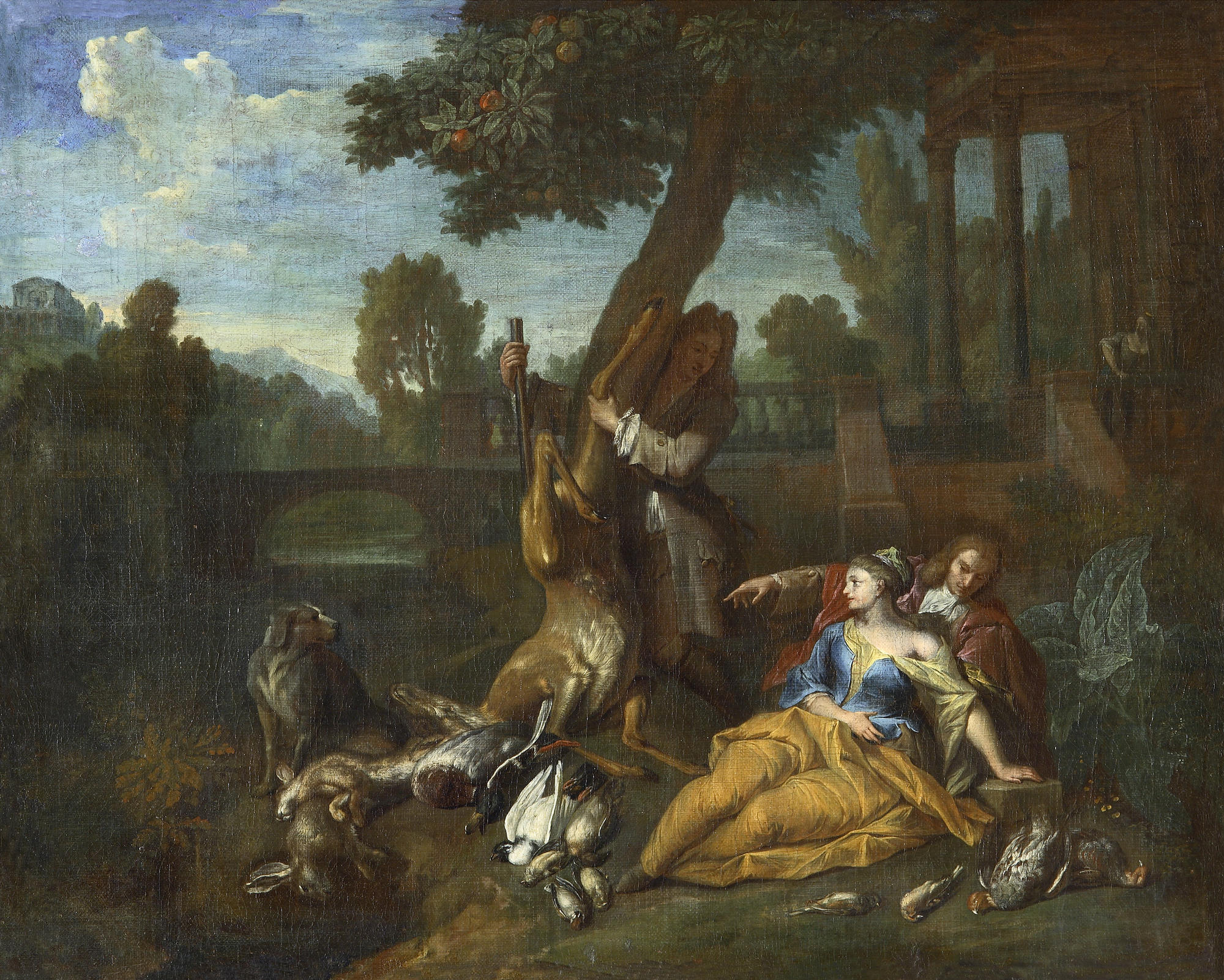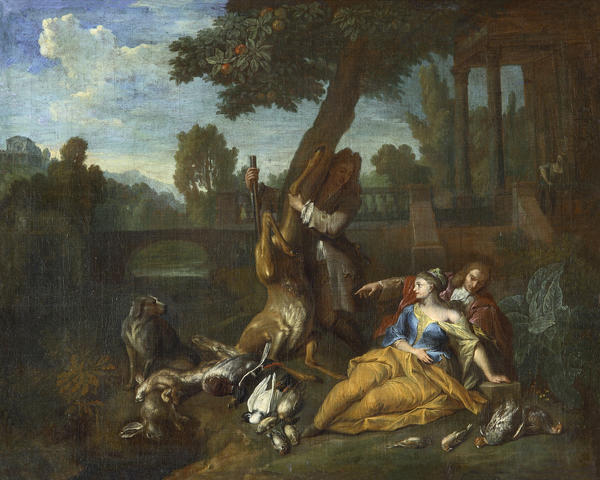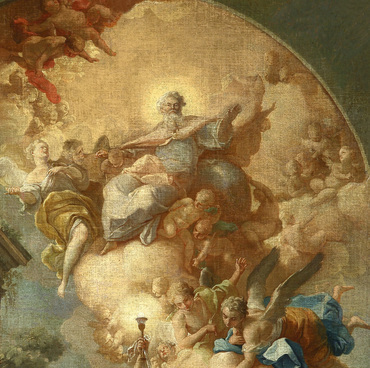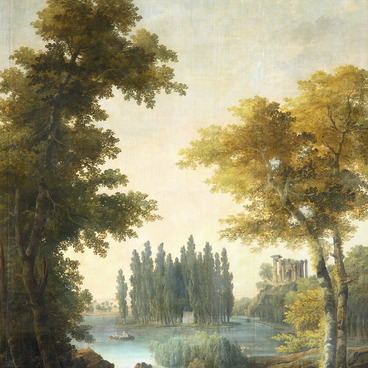The painting ‘Return from Hunting’ belonged to the family of Vorontsov. Earlier the painting was located in Odessa Vorontsovsky Palace, and in the 1900s was transported to Alupka.
The author of the picture is unknown, however the manner of painting and the plot resemble Pieter-Andreas Risbrak (1685/1690 - 1748) works ― the representative of the famous family of Flemish artists. Risbrack was trained in Antwerp by his father, Peter Risbrack the Elder. Riesbrack the Elder favorite plot was scenes from ancient mythology against the backgroung idealized nature. Antique Sculptures, terraces and, above all, hunting are common elements of his son 's work. However, in his paintings, gallant hunters are more busy courting ladies and dressed like for balls.
In the center of the painting, in the shadow of a large fruit tree there is a young man in a grey kaftan and a high wig. With his right hand he is firmly holding a gun, resting on him. With his left hand, the young man raises the killed fallow-deer, demonstrating the size of the caught beast. There’s a shot game around.
To the right of the young man, a man and a woman are sitting on the lawn. The woman is wearing a light yellow dress lowered from her right shoulder, her legs covered with a dark yellow cover. The naked shoulder of this lady suggests that she committed the sin of fornication. Coins scattered under the bush, a symbol of betrayal and corrupt love, also hint at it - The sinner takes a sad look at the killed fallow-deer, which represents meekness and prudence.
A man is dressed in a pink-red caftan with his right hand pointing to the fallow-deer. With great skill, the artist painted a dog, which is watching people and guarding two killed hares. A dog is a symbol of loyalty. There’s a terrace of a stone building with a staircase in the middle ground. There’s a woman near the stairs who is standing and watching the scene depicted in the foreground.
A large stone bridge connects the two banks of a full-water river. The river symbolizes penitence, and opportunity to wash from sins. There’s a lonely-standing tall two-storey house resembling a temple on the top of the hill on the opposite bank. Thus, the painting tells us that any sin can be atoned and forgiven through confession and conversion to God.
The author of the picture is unknown, however the manner of painting and the plot resemble Pieter-Andreas Risbrak (1685/1690 - 1748) works ― the representative of the famous family of Flemish artists. Risbrack was trained in Antwerp by his father, Peter Risbrack the Elder. Riesbrack the Elder favorite plot was scenes from ancient mythology against the backgroung idealized nature. Antique Sculptures, terraces and, above all, hunting are common elements of his son 's work. However, in his paintings, gallant hunters are more busy courting ladies and dressed like for balls.
In the center of the painting, in the shadow of a large fruit tree there is a young man in a grey kaftan and a high wig. With his right hand he is firmly holding a gun, resting on him. With his left hand, the young man raises the killed fallow-deer, demonstrating the size of the caught beast. There’s a shot game around.
To the right of the young man, a man and a woman are sitting on the lawn. The woman is wearing a light yellow dress lowered from her right shoulder, her legs covered with a dark yellow cover. The naked shoulder of this lady suggests that she committed the sin of fornication. Coins scattered under the bush, a symbol of betrayal and corrupt love, also hint at it - The sinner takes a sad look at the killed fallow-deer, which represents meekness and prudence.
A man is dressed in a pink-red caftan with his right hand pointing to the fallow-deer. With great skill, the artist painted a dog, which is watching people and guarding two killed hares. A dog is a symbol of loyalty. There’s a terrace of a stone building with a staircase in the middle ground. There’s a woman near the stairs who is standing and watching the scene depicted in the foreground.
A large stone bridge connects the two banks of a full-water river. The river symbolizes penitence, and opportunity to wash from sins. There’s a lonely-standing tall two-storey house resembling a temple on the top of the hill on the opposite bank. Thus, the painting tells us that any sin can be atoned and forgiven through confession and conversion to God.



